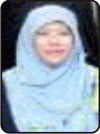Using Data Analysis Projects to Promote Statistical Thinking in an Introductory Statistics Course: A Basis for Curriculum Materials Development
Abstract
ABSTRACT: Statistical thinking has long been a topic of discussion and a generally agreed upon goal for statistics instruction. Statistics involves distinctive and powerful ways of thinking. Statistics is a general intellectual method that applies wherever data, variation, and chance appear. Any introductory course should take as its main goal helping students to learn the basic elements of statistical thinking. Many advanced courses would be improved by a more explicit emphasis on those same basic elements. Those elements were described as: the need for data; the importance of data production; the omnipresence of variability; and the quantification and explanation of variability. The use of data analysis projects provides also students with the opportunity to demonstrate their ability to apply and integrate statistical knowledge and skills in analysing information statistically. This paper will describe the projects and types of statistical analysis that had been selected by 31 counselling students enrolled in an introductory statistics course at the undergraduate level. Content analysis was carried out on their final report of the projects and survey was used to elicit their experiences of working on the projects. These findings will eventually be the basis for the development of curriculum materials to help instructors and their students implement data analysis projects in their respective classrooms.
KEY WORDS: Counselling, projects, survey, statistical thinking, statistics, curriculum materials, and undergraduate students.

About the Author: Assoc. Prof. Dr. Nik Suryani Nik Abd Rahman is a Senior Lecturer at the Institute of Education IIUM (International Islamic University of Malaysia) in Gombak, Kuala Lumpur, Malaysia. For academic purposes, the author can be contacted via phone: +60192244813 or e-mail: nsuryani@iium.edu.my
How to cite this article? Rahman, Nik Suryani Nik Abd. (2014). “Using Data Analysis Projects to Promote Statistical Thinking in an Introductory Statistics Course: A Basis for Curriculum Materials Development” in EDUCARE: International Journal for Educational Studies, Vol.7(1) August, pp.49-56. Bandung, Indonesia: Minda Masagi Press and UMP Purwokerto, ISSN 1979-7877.
Chronicle of the article: Accepted (November 17, 2013); Revised (April 14, 2014); and Published (August 17, 2014).
Full Text:
PDFReferences
Aliaga, Martha et al. (2012). Guidelines for Assessment and Instruction in Statistics Education: College Report. California, USA: Published and endorsed by the American Statistical Association. Available [online] also at: http://www.amstat.org/education/gaise/GaiseCollege_Full.pdf [accessed in Gombak, Malaysia: May 9, 2014].
Bradstreet, T. (1996). “Teaching Introductory Statistics Courses so that Non-Statisticians Experience Statistical Reasoning” in American Statistician, 50(1), pp.69-78.
Chance, B.L. (2002). “Components of Statistical Thinking and Implications for Instruction and Assessment” in Journal of Statistics Education, 10(3). Available [online] also at: www.amstat.org/publications/jse/v10n3/chance.html [accessed in Gombak, Malaysia: October 9, 2013].
Cobb, G. (1992). “Teaching Statistics” in L.A. Steen [ed]. Heeding the Call for Change: Suggestions for Curricular Action. Washington, DC: Mathematical Association of America, pp.3-43.
delMas, R.C. et al. (2007). “Assessing Students’ Conceptual Understanding After a First Course in Statistics” in Statistics Education Research Journal, 6(2), pp.28-58.
Garfield, J. (1995). “How Students Learn Statistics” in International Statistical Review, 63(1), pp.25-34.
Interview with Students Goup A, who were enrolled in an Introductory Statistics Course, in Gombak, Malaysia, on 15 October 2013.
Kirk, R.E. (2002). “Teaching Introductory Statistics: Some Things I Have Learned”. Paper presented at the Annual Conference of the American Psychological Association, Chicago, IL [ERIC Document Reproduction Service No.ED 473 611].
Landrum, R.E. & R.A. Smith. (2007). “Creating Syllabi for Statistics and Research Methods Courses” in D.S. Dunn, R.A. Smith & B.C. Beins [eds]. Best Practices for Teaching Statistics and Research Methods in the Behavioral Sciences. Mahwah, NJ: Lawrence Erlbaum, pp.45-57.
Maziha Mustapha, Siti & Nik Suryani Nik Abd Rahman. (2011). “Classroom Participation Patterns: A Case Study of Malaysian Undergraduate Students” in EDUCARE: International Journal for Educational Studies, Vol.3(2), February, pp.145-158. Bandung, Indonesia: Minda Masagi Press and UMP Purwokerto, ISSN 1979-7877. Available [online] also at: www.educare-ijes.com
Moore, D.S. (1997). Statistics: Concepts and Controversies. New York: W.H. Freeman and Company, 4th edition.
Moore, D.S. (1998). “Statistics among the Liberal Arts” in Journal of the American Statistical Association, 93, pp.1253-1259.
Rumsey, D.J. (2002). “Statistical Literacy as a Goal for Introductory Statistics Courses” in Journal of Statistics Education, Vol.10(3). Available [online] also at: www.amstat.org/publications/jse/v10n3/rumsey2.html [accessed in Gombak, Malaysia: October 9, 2013].
Shaughnessy, J.M. (2007). “Research on Statistics Learning and Reasoning” in F.K. Lester, Jr. [ed]. Second Handbook of Research on Mathematics Teaching and Learning. Reston, VA: National Council of Teachers of Mathematics, pp.957-1009.
Smith, G. (1998). “Learning Statistics by Doing Statistics” in Journal of Statistics Education, 6(3). Available [online] also at: http://www.amstat.org/publications/jse/v6n3/smith.html [accessed in Gombak, Malaysia: May 12, 2014].
Snee, R. (1993). “What’s Missing in Statistical Education” in American Statistician, 47(2), pp.149-154.
Snee, R. (1999). “Discussion: Development and Use of Statistical Thinking: A New Era” in International Statistical Review, 67(3), pp.255-258.
Wild, C.J. & M. Pfannkuch. (1999). “Statistical Thinking in Empirical Enquiry (with Discussion)” in International Statistical Review, 67(3), pp.223-265.
EDUCARE: International Journal for Educational Studies. Ciptaan disebarluaskan di bawah Lisensi Creative Commons Atribusi-BerbagiSerupa 4.0 Internasional
